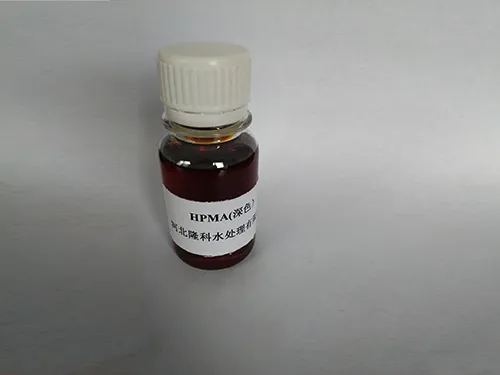Organic Phosphate: Structure, Properties, and Applications
Organic phosphate is a class of organic phosphorus compounds containing carbon phosphorus bonds, in which the phosphorus atom is directly connected to the carbon atom in the structure, and other substituents such as hydrogen, alkyl, aryl, halogen, or functional groups are also attached. Due to its unique structure and properties, Organic Phosphonates have shown broad application prospects in fields such as chemistry, biology, and materials science.

The structural diversity of Organic Phosphonates stems from the fact that phosphorus atoms can be connected to various different substituents
The simplest Organophosphonates are phosphonic acids, which have a structure of RP (O) (OH) ₂, where R is an organic substituent. However, phosphonates typically refer to ester derivatives of phosphonic acids, namely RP (O) (OR ') ₂, where R and R' can be the same or different organic groups. This structural difference significantly affects its physical and chemical properties, such as solubility, reactivity, and stability.
The properties of Organic Phosphonate are influenced by multiple factors
Firstly, the presence of carbon Organophosphonates bonds endows them with unique reactivity, for example, organophosphates can undergo Wittig Horner reactions for constructing carbon carbon double bonds. Secondly, the polarity of the phosphate ester group gives it good water solubility and coordination ability for metal ions. In addition, the electronegativity of phosphate groups affects the surrounding chemical environment, making them stable under acidic and alkaline conditions.
The application range of Organic Phosphate is very wide
In the field of medicinal chemistry, some organic phosphonate compounds have been developed into drugs, such as fosfomycin, a broad-spectrum antibiotic whose unique mechanism of action makes it of great significance in the treatment of drug-resistant bacterial infections. In the field of materials science, Organic Phosphonate can be used as a surface modifier to improve the wetting, adhesion, and corrosion resistance of materials. In addition, Organic Phosphate can also be used as a pesticide, flame retardant, and extractant. For example, glyphosate is a widely used herbicide and belongs to the class of amino phosphonic acid compounds.
The application of Organic Phosphate also faces some challenges
Some organic phosphates have certain toxicity and require safety assessment. In addition, the synthesis process of some organic phosphates is complex and costly, requiring the development of more efficient and environmentally friendly synthesis methods.
In summary, Organic Phosphonates are an important class of organic phosphorus compounds, and their unique structure and properties make them widely applicable in fields such as chemistry, biology, and materials science. With the continuous development of science and technology, people's research on Organic Phosphonate will continue to deepen, and its application fields will also continue to expand. In the future, developing safer, more efficient, and environmentally friendly methods for synthesizing organic phosphates will help promote their applications in various fields.
Organic Phosphonate FAQs
What is the main function of Organic Phosphate?
Organic phosphate is a highly efficient scale and corrosion inhibitor that mainly functions through the following mechanisms:
Scale inhibition: Chelate metal ions such as calcium and magnesium in water to inhibit the crystallization and growth of scales such as calcium carbonate and calcium sulfate.
Corrosion inhibition: Form a dense protective film on the metal surface to slow down the erosion of oxygen and corrosive ions.
Dispersion: Disperse suspended particles through electrostatic repulsion to prevent sedimentation.
What are the common organic phosphates?
Common organic phosphates include:
HEDP (Hydroxyethylphosphonic acid): High temperature resistant, suitable for high hardness water quality.
ATMP (Aminotrimethylene phosphonic acid): Strong chelating ability, suitable for high pH environments.
PBTCA (2-phosphobutane 1,2,4-tricarboxylic acid): It has both scale and corrosion inhibition properties and is suitable for circulating cooling water.
DTPMP (diethylenetriamine pentamethylphosphonic acid): high stability, suitable for harsh water quality conditions.
What water treatment systems is Organic Phosphate suitable for?
Widely used in:
Industrial circulating cooling water system (such as power plants, petrochemical plants);
Scale inhibition of reverse osmosis (RO) membrane;
Boiler water treatment (to prevent scaling and corrosion);
Oilfield reinjection water (to suppress barium sulfate/strontium scale).
How to determine the dosage of Organic Phosphate?
The dosage depends on:
Water hardness (Ca ² ⁺, Mg ² ⁺ concentration);
System concentration factor (COC);
PH value (stronger chelating effect under acidic conditions).
Typical range: 2-20 mg/L, to be optimized through dynamic simulation experiments.
What are the precautions when using Organic Phosphate?
Compatibility: Avoid direct mixing with high valence metal ions (such as Fe ³ ⁺, Al ³ ⁺), which may result in precipitation;
PH effect: The effect may decrease under alkaline conditions (pH>9);
Environmental friendliness: Some phosphonates degrade slowly and need to be evaluated for their biological toxicity;
Monitoring: Regularly check the residual phosphorus content to avoid excessive addition that may cause microbial growth.
-
Water Treatment with Flocculant Water TreatmentAktualnościJun.12,2025
-
Polymaleic AnhydrideAktualnościJun.12,2025
-
Polyaspartic AcidAktualnościJun.12,2025
-
Enhance Industrial Processes with IsothiazolinonesAktualnościJun.12,2025
-
Enhance Industrial Processes with PBTCA SolutionsAktualnościJun.12,2025
-
Dodecyldimethylbenzylammonium Chloride SolutionsAktualnościJun.12,2025





